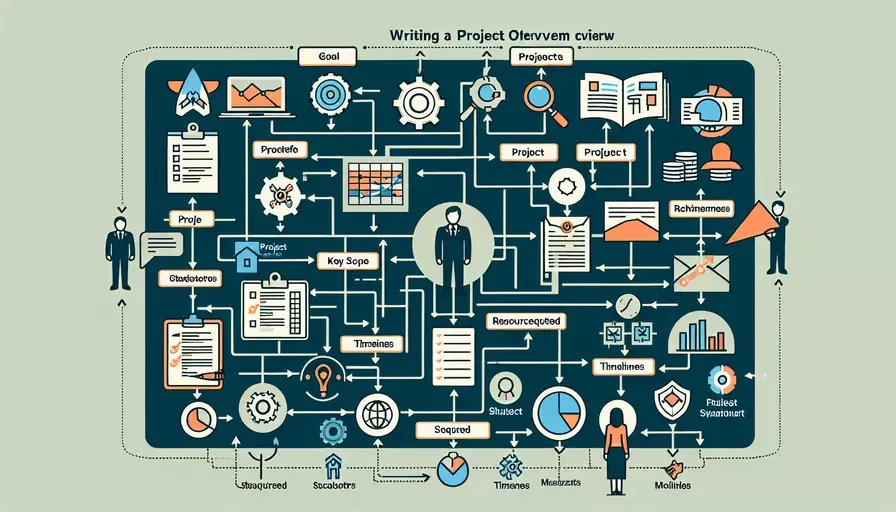The editor of Downcodes brings you a detailed interpretation of the introduction to the enterprise management system project. This introduction is designed to help you clearly understand the core content of the enterprise management system project, including its background, functions, technical architecture, user experience, implementation plan and other key aspects. We will start from the project background and needs, gradually and deeply explore the functions of each module of the system, elaborate on the system's design concepts and technical solutions, and finally look forward to the implementation and later maintenance of the system. We hope this brief introduction provides you with comprehensive and easy-to-understand information to help you better grasp the overall situation of enterprise management system projects.

The enterprise management system project introduction should concisely and clearly outline the main functions of the system, its design purpose, and how it can help the enterprise improve efficiency and management levels. Enterprise management systems are integrated software solutions designed to optimize an enterprise's internal processes, improve decision-making quality, enhance customer relationship management, and improve overall work efficiency. In detail, this type of system usually includes financial management, human resources management, inventory management, customer relationship management (CRM), supply chain management and other modules. In particular, the design purpose of the system emphasizes providing a unified information processing platform for enterprises, through which enterprises can achieve optimal allocation of resources and efficient operation of processes.
In the project background section, you can describe in detail the management challenges and efficiency bottlenecks faced by the enterprise. This can include errors caused by manual workflows, information silo issues, and lags in decision-making due to a lack of integrated analytics tools. The requirements analysis further elaborates on the specific expectations of the enterprise for the management system, such as automated processes, data integration, reporting and analysis, etc.
In this part, it is necessary to focus on the core functions of the system. The financial management module can automate tasks such as accounting, budgeting, and financial reporting, while the human resources module covers employee recruitment, performance evaluation, salary management, etc. The inventory management module helps companies optimize inventory levels and material flow, while the CRM module focuses on the integration of customer data and the maintenance of customer relationships. The supply chain management module focuses on the entire chain from product procurement, production, distribution to sales.
In this part, the technical architecture of the system will be introduced in detail, including the database, programming language, front-end and back-end frameworks used, and necessary middleware. The technical selection of the system needs to ensure high performance, strong security, and good scalability. For example, you can adopt a microservices architecture to provide flexibility and maintainability, while leveraging containerization technologies such as Docker to simplify deployment and operation.
User experience design focuses on how to make the system interface intuitive, easy to use, and responsive. This part needs to discuss the principles and methods of interface design, such as how to identify user needs through user research and how to use prototype design to verify design solutions. Good user experience design can significantly improve employees' acceptance and efficiency of using the system.
The system implementation plan is an important part of the project brief, including timelines, milestones, training plans, and risk management strategies. Ensure that the project progresses according to the established timetable and help users smoothly transition to the new system through professional training and support. At the same time, risk management strategies need to identify potential technical and business risks and develop corresponding countermeasures.
The project results section will summarize the main results after system implementation, such as improved work efficiency, reduced operating costs, improved customer satisfaction, etc. The evaluation mechanism is a means to continuously monitor system performance and user satisfaction, and optimize system functions and improve user experience by regularly collecting feedback and data.
Finally, the project brief needs to address strategies for ongoing support and maintenance of the system after it goes live. This includes regular system updates, user training, and technical support services. Ongoing support and maintenance are key to ensuring long-term stable operation of the system and adapting to changing business needs.
When writing an enterprise management system project introduction, you should accurately convey the value of the system and how it solves practical problems in enterprise management. You should also ensure that the information is clear and easy to understand so that readers from different backgrounds can grasp its core content.
1. What is the importance of an enterprise management system project introduction? An enterprise management system project introduction is very important for the successful promotion of the project and attracting potential users. An introduction can introduce readers to the background, goals, and benefits of a project, thereby stimulating their interest and confidence.
2. What should be included in the enterprise management system project introduction? A complete enterprise management system project introduction should include the following aspects: the background and goals of the project, the problems solved by the project, the core functions and features of the project, the advantages and competitive advantages of the project, the application scenarios and audience of the project .
3. How to write a compelling enterprise management system project introduction? When writing a compelling enterprise management system project introduction, you need to pay attention to the following points: First, highlight the uniqueness and innovation of the project to make readers interested in the project; second, emphasize the practicality and value of the project to make readers aware of The importance of projects to business management; finally, combined with actual cases or user feedback, the successful application and effects of the projects are demonstrated to increase readers' confidence and interest.
I hope this introduction to enterprise management system projects provided by the editor of Downcodes can help you better understand such projects. For more information about enterprise management systems, please stay tuned to Downcodes.